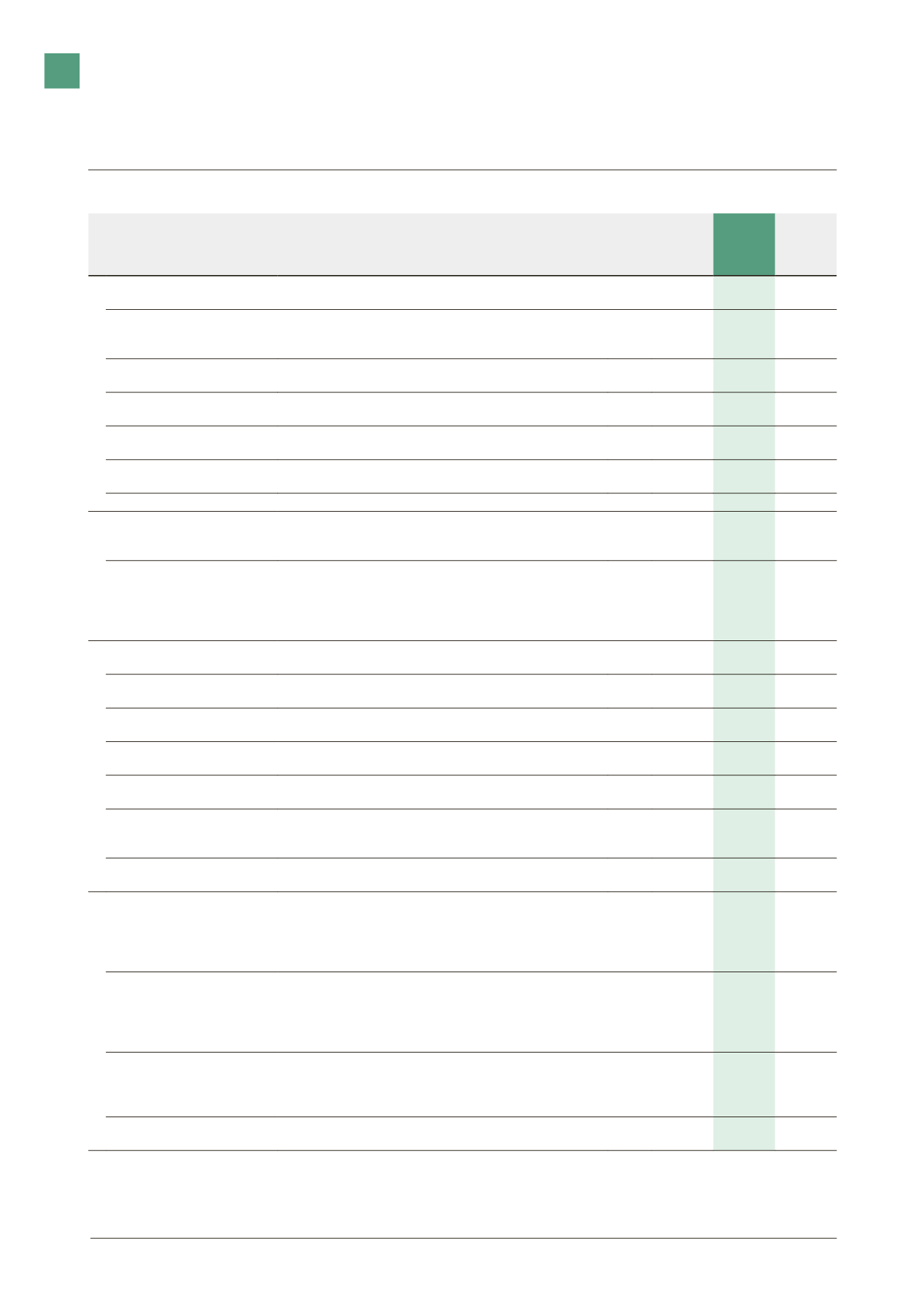

104
LISI 2016 FINANCIAL REPORT
4
I
TABLE OF HSE INDICATORS
INDICATORS
(January 1 to December 31)
Definition
Unit
2015*
2016
Difference
2016
vs.
2015
Use of natural resources
Municipal water
Volume of water from the city's distribution network consumed
by the consumption production site
m³ 417,818
432,111
14,293
Consumption of water drawn
directly from the natural
environment
Volume of water drawn by the production site from the rivers,
lakes and groundwater
m³ 444,018
481,371
37,353
Electricity consumption
Electrical power from the city grid or self-generated,
consumed by the production site
MWh 274,336
290,384
16,048
Natural gas consumption
Heat energy from the volume of natural gas consumed
by the production site
MWh 161,259
172,962
11,703
Liquefied petroleum gas (butane
- propane) consumption
Heat energy from the volume of LPG consumed
by the production site
kWh 4,808,272 5,717,492
909,220
Domestic fuel consumption
Volume of heating oil consumed by the production site
for industrial and heating purposes
m³
246
195
–51
Consumption of other energies Other energies (steam, etc.)
kWh 555,244
578,407
23,163
Hazardous products
Number of products
with permanent harmful
effects for humans
Products with permanent harmful effects for humans
are all products classified as carcinogenic, mutagenic
or toxic for reproduction
483
492
9
Consumption of products
with permanent harmful
effects for humans
Quantity consumed of all products belonging to the list
of products with harmful and permanent effects for humans
(all products classified as carcinogenic, mutagenic or toxic
for reproduction as defined by local national regulations).
Oil for forklifts can be found in this category.
kg 230,889
234,437
3,548
Wastes
Sorted metal
Total amount of metal discharged and sorted as waste
according to national regulations.
T 21,250
23,090
1,840
Paper - Sorted cardboard
Total amount of paper and cardboard discharged and sorted
as waste according to national regulations.
T
545
522
–22
Sorted plastic
Total amount of plastic discharged and sorted
as waste according to national regulations.
T
223
211
–12
Sorted wood
Total amount of wood discharged and sorted as waste according
to national regulations.
T
930
1,145
214
Oil (soluble + whole + whole
and water)
Total amount of oil discharged and sorted as waste according
to national regulations.
T 2,034
2,076
43
Other household waste
(non‑hazardous) or non-sorted
household waste
Amount of unsorted non-hazardous waste or household waste
(as per national regulations) discharged from the site.
T 1,998
1,846
–151
Hazardous wastes (without oil)
Amount of hazardous waste (as per national regulations)
excluding oil waste discharged from the site.
T 13,308
13,772
464
Health/safety
TF0 at end of December
The TF0 is the frequency rate of workplace accidents
with lost time over 12 rolling months TF0:
TF0 = Number of workplace accidents with lost time
over 12 rolling months × 1,000,000/Number of hours worked
over the 12 months elapsed
unit
10.1
10.7
0.6
TF1 at end of December
The TF1 is the frequency rate of workplace accidents with
and without lost time over 12 rolling months TF1: TF1 = Number
of workplace accidents with and without lost time over 12 rolling
months × 1,000,000/Number of hours worked over the
12 months elapsed
unit
14.2
14.3
0.1
TG0 at end of December
The TG0 is the gravity rate of workplace accidents with lost time
over 12 rolling months TG0: TG0 = Number of workplace accidents
with lost time over 12 rolling months × 1,000/Number of hours
worked over the 12 months elapsed
unit
0.31
0.28
–0.04
Number of occupational
diseases
Number of occupational diseases reported on the production site
that generated a work stoppage
unit
62
74
12
* The 2015 data were restated to take the entire year 2015 into account and following the installation of a software program enabling a more relevant collection of data.
Corporate social responsibility
6


















